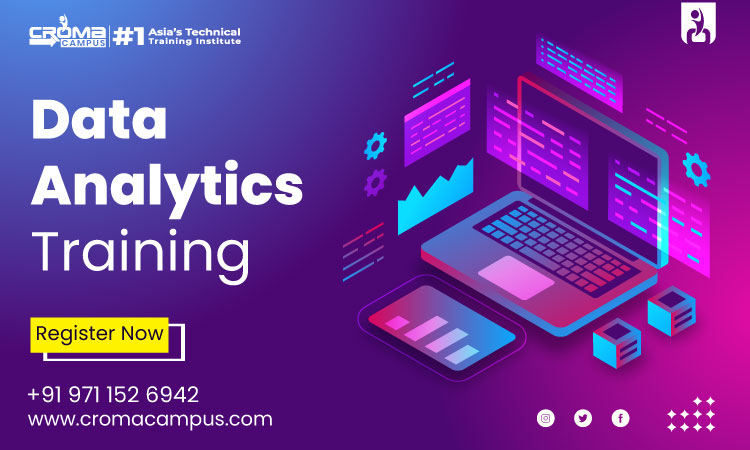Which are the Top Languages for Data Analytics?
It is necessary to effectively analyze and extract meaningful information from large datasets.

Introduction
In recent times, data analytics has become an important part of modern business, enabling them to make important decisions based on data-driven insights. Well, it is necessary to effectively analyze and extract meaningful information from large datasets. For this, it is necessary to have a strong foundation in programming languages.
Here in this article, we are going to discuss the top languages that are used widely in the field of Data Analytics. So if you are interested in enrolling in the Data Analytics Online Course, you will be able to understand its key features and applications. So let’s begin understanding it in detail.
-
Python:
Python is one of the popular programming languages that can be easy to learn. The reason behind its popularity is its simplicity, readability, and extensive ecosystem of libraries. Also, it offers a clean structure and a large community of developers, making it easy to learn and use. It is easy for new programmers to learn, and has a variety of applications in the fields such as machine learning, AI, and deep learning. Python Online Course is mainly used in automating tasks, which saves users time and provides important data.
Key Features:
NumPy:
Helpful in providing efficient numerical operations on arrays and matrices.
Pandas:
Offers powerful data structures and manipulation tools for handling tabular data.
Matplotlib:
Creates high-quality visualizations, including plots, charts, and graphs.
Scikit-learn:
A comprehensive machine-learning library for tasks like classification, regression, and clustering.
TensorFlow and PyTorch:
Deep learning frameworks that help in building and training neural networks.
Applications:
- It can help handle missing values, outliers, and data normalization.
- You can summarize and understand data through visualizations and statistics.
- Well, you can build predictive models and make predictions.
- Also, you can develop complex models for tasks like image recognition and speech synthesis.
-
R:
R has become a popular programming language for those working with big data. Also, it is a powerful scripting language that is used for statistical computing and graphics. It offers a rich set of statistical functions and packages, making it ideal for complex data analysis tasks. R is more approachable than Python for non-developers as users can create a statistical model.
Key Features:
Base R:
Provides a core set of statistical functions and data structures.
CRAN (Comprehensive R Archive Network):
A repository of thousands of packages for various data analysis tasks.
ggplot2:
A powerful visualization library for creating elegant and customizable plots.
dplyr:
A data manipulation package for efficiently transforming and aggregating data.
tidyr:
A package for tidying data into a consistent format.
Applications:
- Well, you can build and evaluate statistical models to understand relationships between variables.
- Also, it helps in creating informative as well as visually appealing graphs and charts.
- With R, you can analyze biological data, such as genomic and proteomic data.
- When it comes to financial analysis, R can help in performing risk assessment, portfolio optimization, and market analysis.
- R can help in analyzing social data to understand human behavior and societal trends.
SQL:
SQL is an industry-based standard database language. Well, if you are looking to become a data analyst you need to learn this language first. You can learn this language by doing a Data Analytics Course in Delhi. Well, it is used to retrieve, manipulate, and manage data stored in relational databases. Individuals who have to handle big data must possess a working knowledge of SQL to query databases.
Key Features:
Data retrieval:
Choosing specific data from tables based on various criteria.
Data manipulation:
Inserting, updating, and deleting data in tables.
Data aggregation:
Calculating summary statistics, such as averages, sums, and counts.
Database management:
Creating, modifying, and querying database structures.
Applications:
- Using SQL, you can interact with the databases such as MySQL, PostgreSQL, and SQL Server.
- SQL helps in extracting, transforming, and loading data into the data warehouse for analysis.
- Also, it helps in creating reports and dashboards to provide insights into business performance.
- SQL can effectively discover the patterns and trends in large datasets.
Scala:
Scala is an all-programming language that runs on the Java Virtual Machine. Well, it combines the object-oriented and functional programming paradigms, and it provides a powerful and expressive data language for data analysis. Scala allows developers to leverage the huge ecosystem of Java Libraries and frameworks. Also, it provides access to a wealth of tools for data processing, machine learning, and big data analysis.
Key Features:
Functional programming:
Supports functions as first-class citizens, enabling concise and expressive code.
Interoperability with Java:
Can seamlessly integrate with Java libraries and frameworks.
Spark:
A popular distributed computing framework written in Scala provides efficient tools for processing large datasets.
Akka:
It is a toolkit for building concurrent and distributed applications.
Applications:
- Scala can help in analyzing massive datasets using frameworks like Spark and Flink.
- Also, this can help in handling streaming data and performing analysis in real-time.
- Using Scala, you can build scalable and high-performance web applications.
- Well, you can develop machine learning models using libraries like MLlib in Spark.
Conclusion:
From the above discussion, it can be said that in the world of data analytics, the choice of programming language plays an important role in determining the efficiency and effectiveness of data analysis tasks. These languages offer unique strengths and cater to different needs. So if you carefully consider factors such as the learning curve, community support, performance, and specific requirements, you can select the most suitable language. So don’t wait long and enroll in the Data Analytics Course Online today and give your career new heights.




